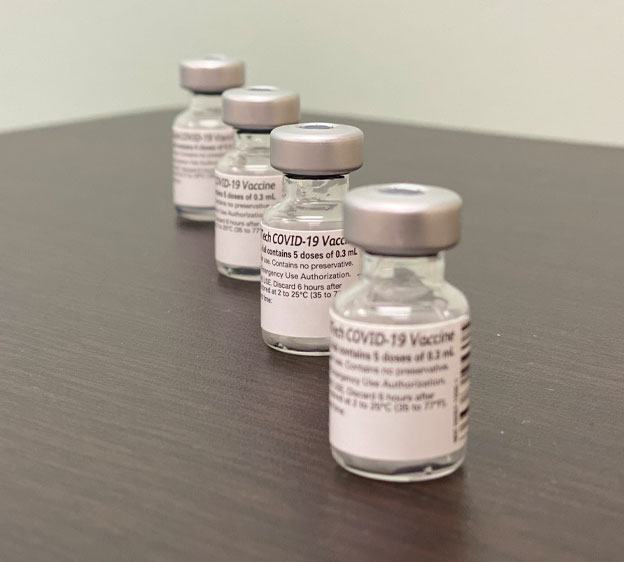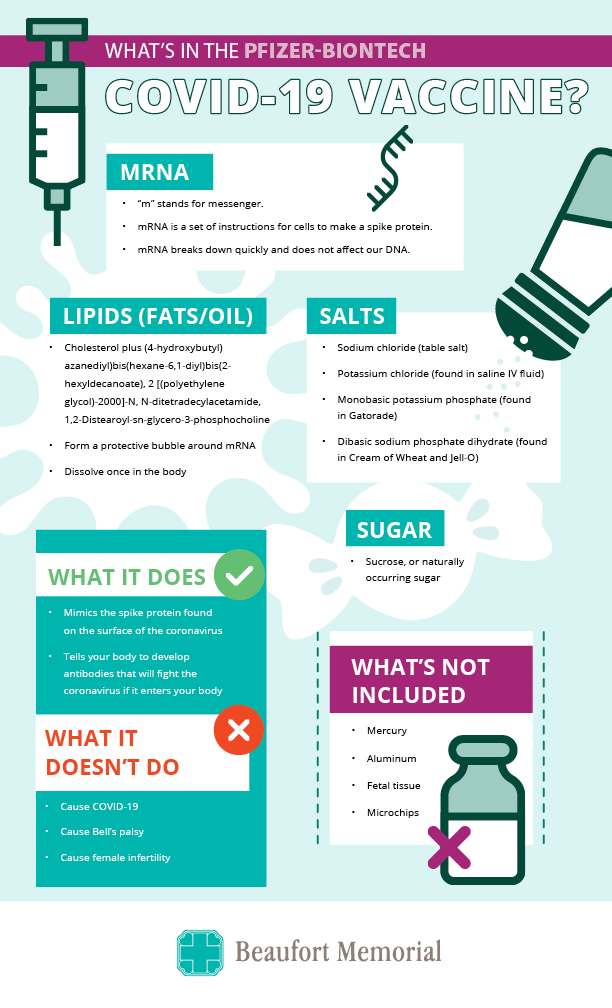The COVID-19 Vaccine, Explained
January 7, 2021
Vaccines are powerful tools used to reduce your risk for contracting harmful viruses. Vaccines help negate childhood illnesses, such as measles and whooping cough, to dangerous respiratory viruses, including the flu and, most recently, COVID-19. The latest vaccines to be developed offer hope in the era of COVID-19.
How Vaccines Work
When you get exposed to a virus, your body’s immune system activates and develops substances called antibodies that bind like a lock and key to the virus so the body can destroy it. Those antibodies stay in your system, so the next time you encounter a virus, your immune system is ready to fight it.
Many vaccines, from childhood inoculations to the flu shot, use an inactive or weakened form of a virus to prompt your body to produce antibodies. The inactive virus does not make you sick, but the antibody response will still protect you when you encounter a live form of the virus.
How COVID-19 Vaccines Work
As of the beginning of January, there are two COVID-19 vaccines in use in the U.S., one made by Pfizer-BioNTech and one made by Moderna in partnership with the National Institutes of Health. Both vaccines use a different technique to prompt your body to produce antibodies that protect against the new coronavirus. They use messenger RNA, or mRNA.
You may have seen images of the coronavirus with small spikes on the outside. It’s those spikes (which are actually proteins) that account for most of the illness. The mRNA vaccines prompt immune cells to produce a piece of that spike protein in a way that does not make you sick with COVID-19 but does cause the immune system to produce antibodies and enable it to fight the new coronavirus when you encounter it.
To be fully effective, the current COVID-19 vaccines require two doses, separated by 21 or 28 days depending on the version you receive. You may still get sick if you encounter the virus before the second dose takes full effect, so it’s important to continue wearing a mask, social distancing and avoiding large gatherings until you are fully protected.
Read More: Addressing Vaccine Concerns: Myth vs. Fact
A New Approach to Vaccines
The COVID-19 vaccines are the first to use mRNA genetic material, but scientists have been researching mRNA technology as far back as the 1990s as a potential defense against other infectious diseases and even cancer. That base research enabled researchers to develop the COVID-19 vaccine relatively quickly.
One reason mRNA vaccines are appealing is that scientists can produce large quantities of mRNA proteins faster and more easily than large quantities of an inactive virus. That also means new proteins can be produced quickly in the event that the coronavirus mutates.
These vaccines do have some drawbacks. Namely, mRNA is not very stable and it breaks down quickly. Because mRNA is so fragile, these vaccines have to be held at subzero temperatures. It’s also unclear how long immunity lasts after receiving the two doses required by each vaccine. However, thus far, they have shown to be very safe and effective. The primary side effects appear to be pain and swelling at the injection site. You may also experience chills and side effects similar to those of the seasonal flu shot — fever, fatigue and headache.
We will continue to update you about the availability of COVID-19 vaccines as more information becomes available.
If you still need a flu vaccine this winter, contact your primary care provider.

Learn more about the COVID-19 vaccines and local availability.
